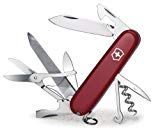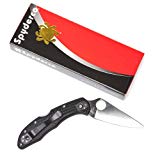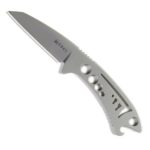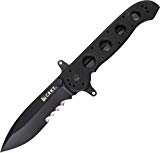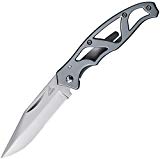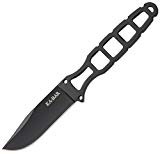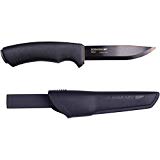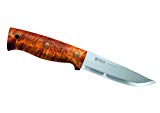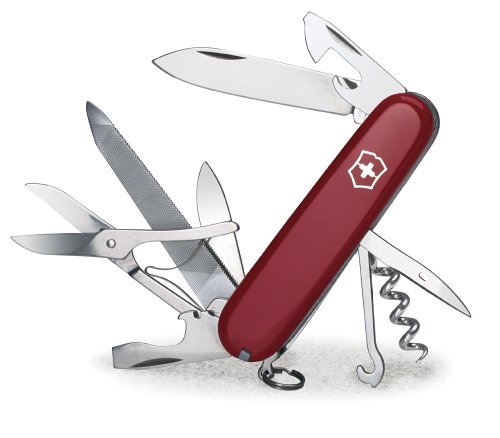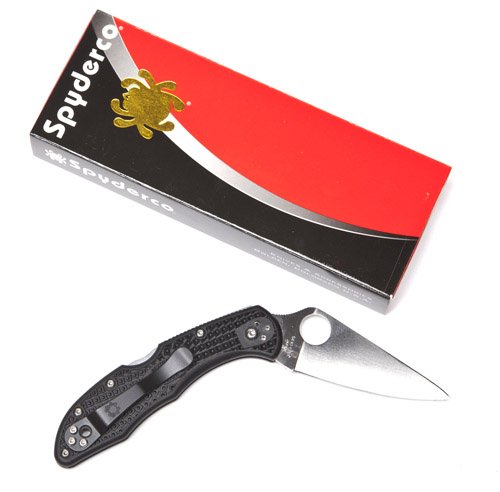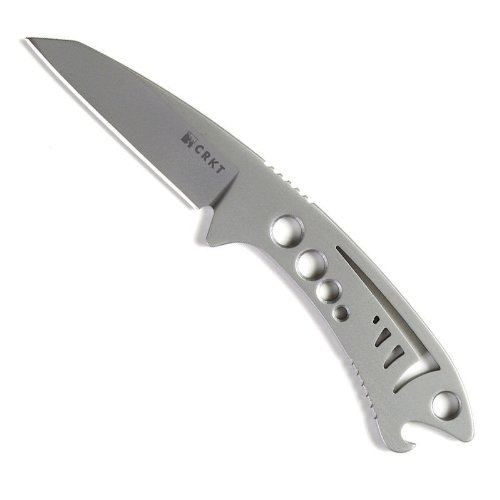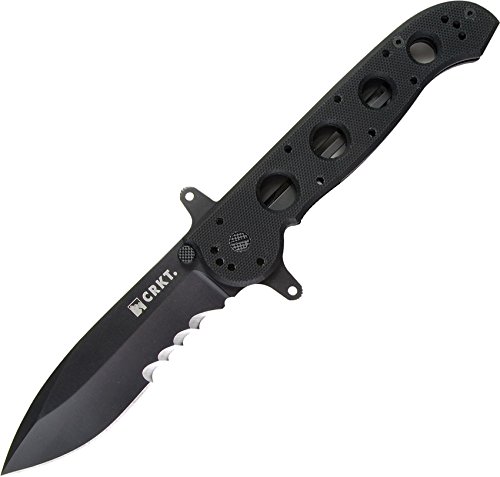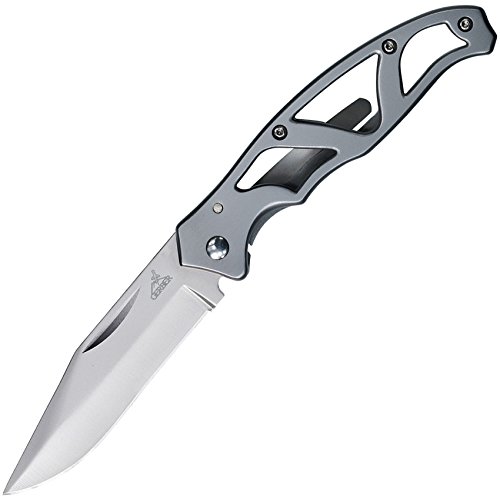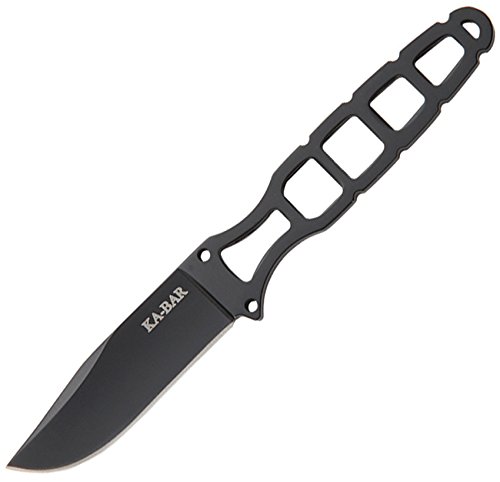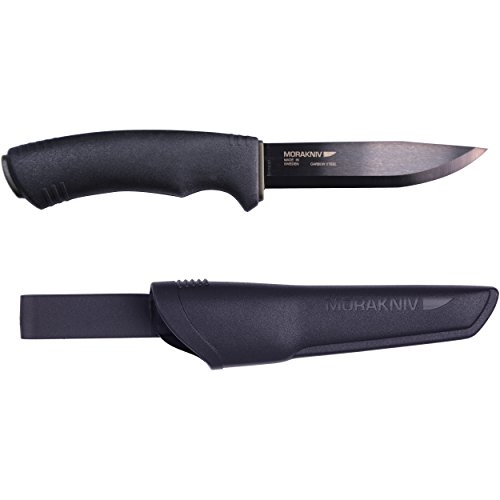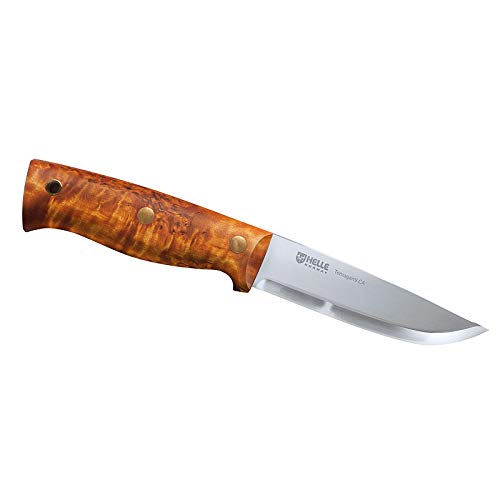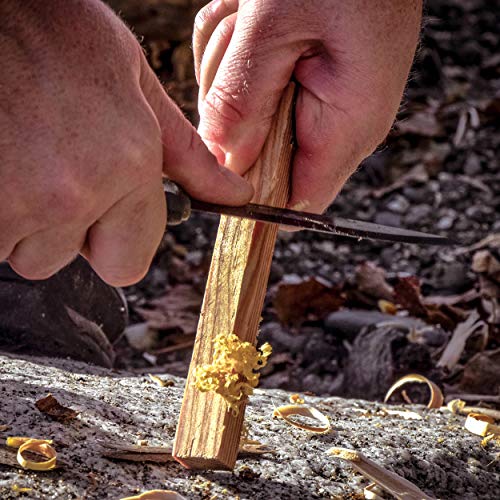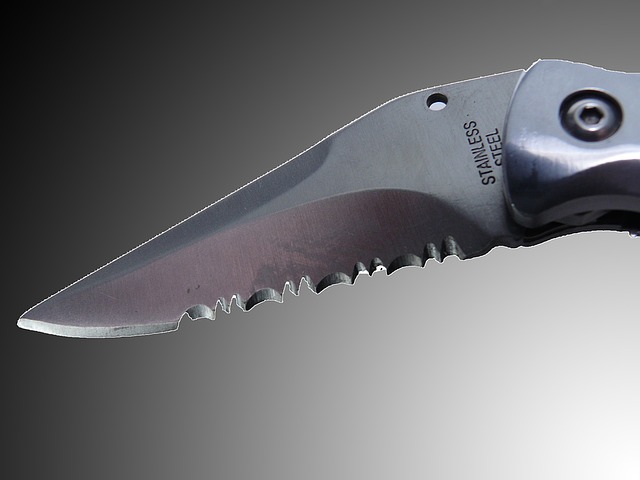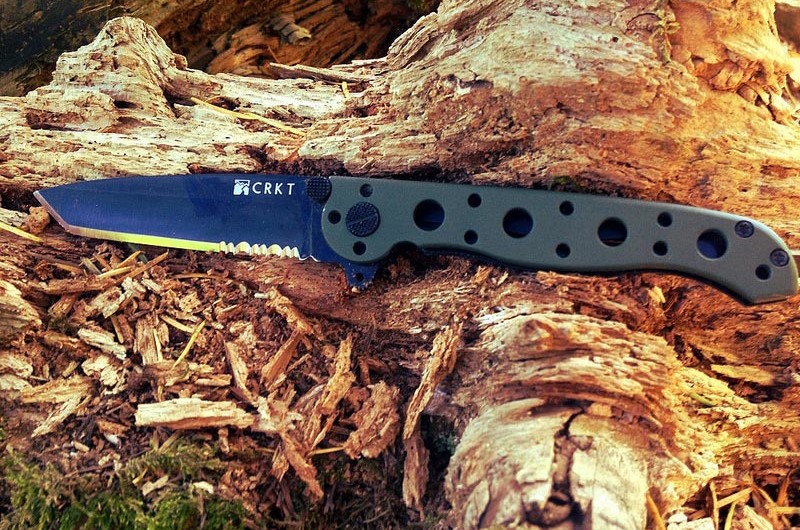
Updated: July, 2019: You don’t have to spend a small fortunate to get a durable, high-quality pocket knife for camping and backpacking. Something well under $100 should do you just fine. Of course, if you need something larger for hunting, skinning meat or scaring the hell out of your neighbors, the price tag will go up.
More...
The sky is growing dark and the air is getting cooler. You’re scrambling to get that tarp up before the wet stuff hits, but just as you press your serrated pocket knife against a stretch of rope the blade starts to wobble. Then the pivot screw pops out and lands in the dirt.
You swear. You maybe even whip that busted knife into the woods. Sure, you’re mad that it’s going to be a helluva lot harder to put up that tent now. But what really pisses you off is that you bought that pocket knife just a few weeks ago. And yet, it fell apart quicker than a guest on Jerry Springer.
For part two of my two-part series on Backcountry Blades, I’ve complied a list of knives that have proven themselves worthy. I’ve either used each one myself or they’ve scored well in reviews by backcountry explorers far wiser than I. And please be aware that this article contains affiliate links. So if you’re in the market, check out the S&TT pocket knife review.
Comparison Chart
Name | Price | Weight | Rating | Notes |
|---|---|---|---|---|
$$$ | 4.8 oz | Is fully ambidextrous, has a textured grip, and is molded from glass-filled nylon for superior durability. | ||
$$$ | 3.5 oz | Compact Swiss Army pocketknife for campers, hikers, and all-around users | ||
$$$ | 0.16 oz | The folder opened up the knife market to lightweight performance, one-hand opening pocket knives. | ||
$$$ | 1.44 oz | Dogfish made by Columbia River Knife and Tool is a skeleton style fixed razor edge blade equipped with a bottle opener. | ||
$$$ | 6.1 oz | Designed by Kit Carson in Vine Grove, Kentucky | ||
$$$ | 1.4 oz | Crafted from surgical stainless steel, this opens smoothly, locks, and features a unique design that lightens it up. | ||
$$$ | 1.44 oz | Skeleton, Fixed Blade Knife | ||
$$$ | 6.2 oz | Spine of the blade is ground especially for use with a fire starter (not included) | ||
$$$ | 5.4 oz | A handmade handle using Curly Birch, Antler and leather |
Best Backpacking Pocket Knives
This company makes some of the best pocket knives around. The Mini Griptilian is a sweet all-around knife with a solid locking mechanism. Some Benchmade products need a little sharpening right out of the box, so just keep that in mind. Aside from that small nit, the Benchmade Mini Griptilian is pretty solid. You can also get a serrated version as well to chew through thin branches and whatnot. You can grab one at REI for about $90. Click here to check it out.
Ah, the classics never die. The Victorinox brand has earned ample respect for crafting a quality Swiss blade. The Mountaineer Pocket Knife has got all the basics you’d expect from a traditional Swiss Army Knife: a nifty tool to bust you outa any bind. It’s also relatively lightweight and not too pricey at about $40.
Don’t forget that the Swiss Army knife can be had in many models with varying amounts of “tools” optional. If you’re looking for a more minimalist Victorinox knife, try the Swiss Armry Knife Classic SD.
Don’t forget that the Swiss Army knife can be had in many models with varying amounts of “tools” optional. If you’re looking for a more minimalist Victorinox knife, try the Swiss Armry Knife Classic SD.
Pro Tip: Tie the knife to your backpack with a long piece of string to make sure you don’t lose it or accidentally leave it behind when packing camp.
A dependable all-purpose workhorse that offers few frills. It has a fiberglass reinforced handle complete with Spyderco’s signature “Bi-Directional Texturing,” which offers ample grip when it’s time to get to work. At a mere 2.5 ounces, the Spyderco Delica is great companion for the trail.
This knife operates on a solid frame with reinforced structure provided by two internal stainless steel plates. Flat ground blade means sharp, reliable, but not too fragile. We’re pretty sure you’ll love this Spyderco bestseller.
Here’s a light and inexpensive little number for those who prefer fixed-blade knives (I’ll admit, they are easier to clean). It has a secure grip with friction grooves near the butt. Also, turn it around and that dogfish face makes for a handy bottle opener. Perhaps the best thing about this Dogfish Neck pocketknife is the price: a mere $16 on Amazon
A high-quality, no-frills blade that stays sharp and sharpens well. I like the serrated model, myself. It weighs in at just 3.2 ounces – a sweet little pocketknife to slip into your pocket before hitting the trail. It’ll run ya about $41.
Locking blade safety and dual “cross guard” make this knife a workhorse that won’t slip when slicing, stabbing, or working. Textured G10 scales will remain highly rugged and secure in your hand even when water or fluids have coated the handle.
Overall this rugged blade is definitely made to work as hard as it looks.
Gerber has been making budget minded knives for years and continues to balance quality, durability, function, and price at a perfect mixture.
With the mini paraframe you get a small profile knife, lightweight, with a reliable pocket clip. The full metal construction is bomb-proof and easy to keep clean. Or just let it get dirty. These knives won’t care.
At a sub $10 price point you can’t really go wrong with this reliable, trusty little utility knife that will accompany you everywhere you go. I’ve been using one for years and have yet to be disappointed.
Want a knife that won’t break the bank, from a reputable knife maker, which is nearly indestructible? Here it is. The full steel, full tang, all metal Ka-Bar Skeleton knife with hard plastic sheath. These materials are waterproof, rugged, durable, and all but unbreakable.
Skeleton construction means lightweight and minimalist while maintaining extremely high levels of durability and reliability.
Pro Tip: Order some of your favorite color para-cord and wrap your knife handle with whatever color you want for a personalized survival touch!
Mora has developed a well-deserved rep for producing high-quality blades at a decent price and this pocket knife reinforces what’s best about this brand.
The basic Mora-style blade has been commonplace in many Scandinavian countries for centuries. The use of carbon steel means the blade is much easier to sharpen and holds an edge longer than other many other products.
Reviewers have raved about the Mora Bushcraft Black Carbon Steel Knife, saying it performs well even when slicing hardwood like oak. You can get it at Amazon for about $40 by clicking here.
BONUS KNIFE PICK: Helle Temagami
OK, this one isn’t technically a pocket knife…
Ever watched the popular show Survivorman, with Les Stroud? If you’re curious what knife Les endorses in the backcountry – it’s the Helle Temagami. Les worked with knife makers and designers at Helle in Norway to produce this artisan knife at an affordable price.
As a blacksmith myself, I have to respect how they constructed this knife and if you’re curious about the specs, techniques, and methods they used to make Les Stroud’s Temagami knife with Helle of Norway, then you’ll definitely want to check out our review of the Helle Temagami.
How to Choose the Best Backpacking Pocket Knife for You
How will you use your backpacking knife?
This question provides the fundamental foundation for choosing the knife you will purchase. Without thinking about this question first, there’s really no way to buy the correct knife for you.
Maybe you’re really into bushcraft and you want a beefy, heavy knife that can baton branches in half and shave wood to make traps without dulling. Maybe you’re an ultralight hiker who wants the lightest knife possible for occasionally cutting up some food or slicing a stray thread.
What should be clear is that these two different hikers would most likely have different ideal knives.
Before you move on, take a moment to think to yourself about the type of situations and tasks where you’re most likely to use your knife on your favorite hiking trip.
What size do you need?
There are really two ways you can approach this spectrum. Either you’re likely inclined toward “bigger is better” or you prefer something small and easily carried.
In the knife world, and blade world in general, I’ve often found that there’s a trend among many newbies to go for the “bigger is better” side of the scale. Those with more experience in their chosen niche, however, tend to keep things more modest.
Really it’s all about having the proper blade for your intended purpose. When I go backpacking I use my knife rarely and, when I do, it’s for simple tasks like picking out a splinter, cutting some cheese cubes, or slicing off a stray thread from a shirt – stuff like that.
I feel that a lot of people tell themselves a story in their head of, “Oh, what if I get stranded and I need to cut down saplings to make a raft?” Well… the likelihood of that happening is extremely slim and, if it were to happen, you’d be far better off with a small hatchet than a large knife.
Before you decide what size knife you want, first think realistically about what tasks you expect to perform with it 99% of the time. Once you’re sure you’ve assessed your needs with an unbiased and informed attitude, then you’ll be much closer to making a reasonable decision.
Remember, bigger knives weigh more, usually cost more, and take up more room in the pack. If you’re not certain, I’d advise erring on the smaller side.
I personally use the Victorinox Classic in most on-trail backpacking situations with a 2.25″ blade and I rarely feel the need for anything more substantial during routine backpacking trips.
What type of steel should the blade be made from?
If you really want to dive down this rabbit hole you’re going to be up to your eyeballs in misinformation and marketing. Modern knife makers have put a lot of time and effort into marketing blade steel types to the consumer in ways that are unhelpful, misleading, and often outright incorrect.
Let me be clear – different steel alloys do make a difference in the final product of a knife blade. Exactly how and why those steels impact the final function of a blade, however, is a heady topic that requires a substantial education on its own so we’ll only brush the surface here.
Just like knife size, the type of steel alloy you select for you knife blade should depend on the intended use of the knife itself.
For backpacking uses, I’ll assume that the common tasks we’ll ask of a knife are things like slicing cheese, cutting fabric, and maybe occasionally shaving some small pieces of wood for various purposes. Nothing particularly extreme.
For these common backpacking uses I would argue that even the “worst” modern knife blade materials should suffice just fine. Alloys that commonly receive a bad rap, such as basic stainless steels should, in reality, hold up just fine for these tasks. In the meantime, you’ll save a lot of money by purchasing these less expensive blade types.
Remember, it’s a knife – not a hatchet, screwdriver, saw, pry bar, shovel, or sword. Don’t be surprised if you break, bend, chip, or dull even the best knife when used improperly. It’s not the knife’s fault, it’s your fault.
What I’m saying is don’t lose sleep over blade alloy details, just buy the knife that fits your needs and budget.
Do I need serrations on my blade?
Serrations, like knife size, shape, and design serve a very specific purpose.
They are used to create scalloped recesses in which the blade is protected by the protrusions around it, thereby avoiding dulling on hard surfaces – the tips of the serrations take the abuse instead of the blade edge.
Contrary to popular belief, serrations are not for sawing. saws are for sawing and their purposefully designed saw teeth achieve this goal far better than the serrations on a knife ever will.
Knife serrations come with the distinct drawback of compromising slicing ability, however. Doing any kind of fine cutting or slicing is nearly impossible with serrated blades due to scallops interrupting the slicing motion and causing severe gouging of the material in question.
Optionally, you could use a blade that is partially serrated. This is a decent compromise and is highly popular with many knife users.
Serrations are fantastic if you intend to utterly bash, hack, mash, and mangle your blade into things it probably shouldn’t be cutting. For instance, if you want to chop, hack, and grind your way through thick sinew while glancing off of bone dressing a large animal, serrations may make the job easier and save the sharpness of some parts of your blade in the meantime.
Another reasonable use for serrations is in some rescue and salvage operations. In cases like hacking through a seatbelt or cutting a rope that is caked in dry mud, serrations excel and may even save your blade from damage with contact on surfaces it shouldn’t be cutting.
When it comes to backpacking applications, however, serrations really seem to struggle to find a plausible purpose and instead tend to just get in the way.
For the vast majority of common uses during normal backpacking activities, serrations are more likely to impede fine motor control of the knife than help you in any way.
Folding vs Fixed Blade Knives
Folding knives, as you might guess, are the popular pocket knives that fold into their own handle. Fixed blade knives, then, are the knives which are not capable of folding and are usually carried on the belt inside a sheath.
There’s no one right answer here but instead, think about the advantages of each style and what might work the best for your needs.
Folding
- Protects its own blade (built-in sheath)
- Easier for pocket carrying
- No sheath to get lost
- Can be used every day or on the trail
- Shorter length when stored
- Pocket clips can be convenient
- Folding mechanism on cheaper
- models may be a weak point
Fixed
- No folding mechanism to adjust or break
- More “traditional” look and feel
- Often available in many custom made styles
- Has to be carried on a belt or in the pack
- Can’t collapse on your fingers in use
Handle Material
There are tons of different handle materials out there and more are coming on the market all the time. I’ll go over a few of the more common ones you’re likely to run across.
Wood can be great if used with the right finishes. Avoid shiny high polished finishes on smooth wood, however, as this surface can become slippery when wet and thus dangerous to the wielder. Wood handles also are prone to denting, chipping, or splitting if used roughly.
Metal, usually aluminum, is a very sturdy and durable material. It’s one of my favorites because it’s reasonably lightweight and nearly indestructible. Look for aluminum handles that have some sort of grip texture milled into them.
Micarta is one of my favorites. It’s a material made by gluing together layers of fabric which are then turned into handles. Micarta’s biggest selling point is the layered look but it also does a great job at absorbing sweat and retaining grip thanks to the fabric fibers.
Kirinite is another manmade material known for its pretty colors and patterns like micarta. Kirinite’s biggest drawbacks are that it’s prone to cracking due to its brittle nature and it tends to be slippery. Kirinite is probably best used as an accent material in a handle.
Blade Shapes
There are many different blade shapes available but a few of the more prolific ones account for the vast majority of common knives. Let’s talk about a handful you should know and what each one is good for.
Clip point knives are super common. These knives feature a spine that falls off toward the tip usually in a relatively aggressive slope. Depending on the thickness of the knife, the grind on the blade, and the bevel, clip points may have a slightly “weak” tip. Just avoid prying with them or you might break the tip off.
Drip point knives have a little more stubby appearance with a shorter tip. Their spine falls off gradually and overall the tip of the knife feels a bit rounded. They’re quite sturdy but lack piercing or stabbing power, but there are few reasons to be stabbing around with a backpacking knife anyways. Because of their all-around high marks in controllability and durability, they make an exceptional utility knife for backpackers.
Tanto point knives are aesthetically my favorite thanks to their sharply angled geometric tip shape inspired in part by Japanese tools of war. Because the belly of the knife is usually flat or close to flat, however, they make poor skinning or slicing knives through their extremely strong tip is perhaps the most durable of all knife designs and lends itself to piercing. From a practicality standpoint, they leave something to be desired.
Sheepsfoot knives have no tip at all. The spine falls sharply all the way to the flat (or slightly upswept) belly creating an utter lack of piercing tip. This is great for avoiding puncturing or stabbing when working. These knives are highly controllable and make an outstanding choice for backpacking. Their major drawback, however, is that the design is relatively uncommon so finding a good one can be tricky.
Knife types you probably won’t carry on the trail include gut hook knives for hunting, trailing or swept point knives common in filleting, and dagger or spear point knives (which can be illegal in some areas if sharpened on both edges). These knives are mainly used for chopping or stabbing various types of flesh and therefore probably only belong in your pack if you’re heading out hunting on the trail.

